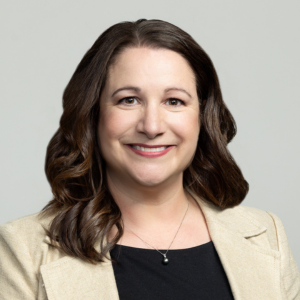Aligning benefits for dual eligibles
Directed by provisions of the Affordable Care Act (ACA), the new health reform law, the Centers for Medicare & Medicaid Services (CMS) has launched a new initiative to align and coordinate benefits between Medicare and Medicaid for persons who are eligible under both programs.
Bob Gatty |
The effort has implications for providers of services to dual-eligible beneficiaries, including nursing homes and long-term care facilities.
“Our goal is to make sure dual-eligible beneficiaries have full access to seamless, high-quality healthcare and to make the system as cost-effective as possible,” CMS says in its online explanation of its initiative (www.cms.gov/medicare-medicaid-coordination).
Established by the ACA, the Federal Coordinated Health Care Office (Medicare-Medicaid Coordination Office) works with both programs across federal agents, states and stakeholders to align and coordinate benefits between the two programs. “We partner with states to develop new care models and improve the way dual eligibles get healthcare,” CMS explains.
Now, CMS is looking for information from stakeholders, including groups representing healthcare constituents such as LTC facilities and nursing homes, on how the programs can be better aligned covering six key categories:
Coordinated care
Fee-for-service benefits
Prescription drugs
Cost sharing
Enrollment
Appeals
The goals of the Medicare-Medicaid Coordination Office include providing dual-eligible individuals full access to their benefits, simplifying the process that they must deal with, improving quality of care and long-term services, eliminating regulatory conflicts, improving care continuity and ensuring safe and effective care transitions for dual-eligible individuals, eliminating cost-shifting between the two programs and related healthcare providers and improving the quality of performance of providers and suppliers under the two programs.
In a Federal Register notice May 16, CMS said it is seeking information regarding how misalignments between specific Medicare and Medicaid requirements affect access to high-quality care, and asked stakeholders to respond to several questions:
How can the Medicare and Medicaid programs better ensure dual-eligible individuals are provided full access to program benefits?
What steps can CMS take to simplify the processes for dual-eligible individuals to access the items and services guaranteed under the programs?
Are there additional opportunities for CMS to eliminate regulatory conflicts between the rules under the Medicare and Medicaid programs?
How can CMS best work to improve care continuity and ensure safe and effective care transition for dual-eligible beneficiaries?
How can CMS work to eliminate cost-shifting between the Medicare and Medicaid programs? How about between related healthcare providers?
In a letter to House Speaker John Boehner (R-Ohio), Health & Human Services Secretary Kathleen Sebelius noted that in 2008 there were 9.2 million dually eligible beneficiaries and that they “are among the most chronically ill and costly segments of both the Medicare and Medicaid populations, with many having multiple severe chronic conditions and/or long-term care needs.” Nineteen percent, she said, live in institutional settings compared to only three percent of non-dual eligibles.
Moreover, while 16 percent of Medicare enrollees are dual eligibles, they accounted for 27 percent of Medicare spending in 2006, and the 15 percent of Medicaid enrollees who are dual eligible represented 40 percent of that program’s spending in 2007.
Sebelius said CMS’s Federal Coordinated Health Care Office has begun to prioritize opportunities to align differing policy, regulatory or statutory requirements or incentives that might prevent dual-eligible individuals from receiving seamless, coordinated care. She said it is working to provide states, payers, providers, beneficiaries and caregivers with tools needed to develop programs that align benefits of the two programs for dual-eligible beneficiaries. The first initiative in this area was to provide timely Medicare Parts A, B and D data to state Medicaid agencies for dual-eligible populations this spring.
“Our goal is to make sure dual-eligible beneficiaries have full access to seamless, high-quality healthcare and to make the system as cost-effective as possible.”
The Medicare-Medicaid Coordination Office is also working to develop opportunities for integrated care through payment and delivery system reform for dual eligibles, Sebelius said. She explained that these provider-based demonstrations will complement work at the Innovation Center on Medicare Accountable Care Organizations and other Medicare payment and delivery system demonstrations, which will improve coordination of care for a number of dual-eligible individuals.
Bob Gatty has covered governmental developments for the trade and business press for more than 30 years. He is founder and president of G-Net Strategic Communications, Sykesville, Maryland. Long-Term Living 2011 July;60(7):8-9

Robert Gatty has more than 40 years of experience in journalism, politics and business communications and is the founder and president of G-Net Strategic Communications based in Myrtle Beach, South Carolina. He can be reached at bob@gattyedits.com.
Related Articles
Topics: Articles , Medicare/Medicaid










